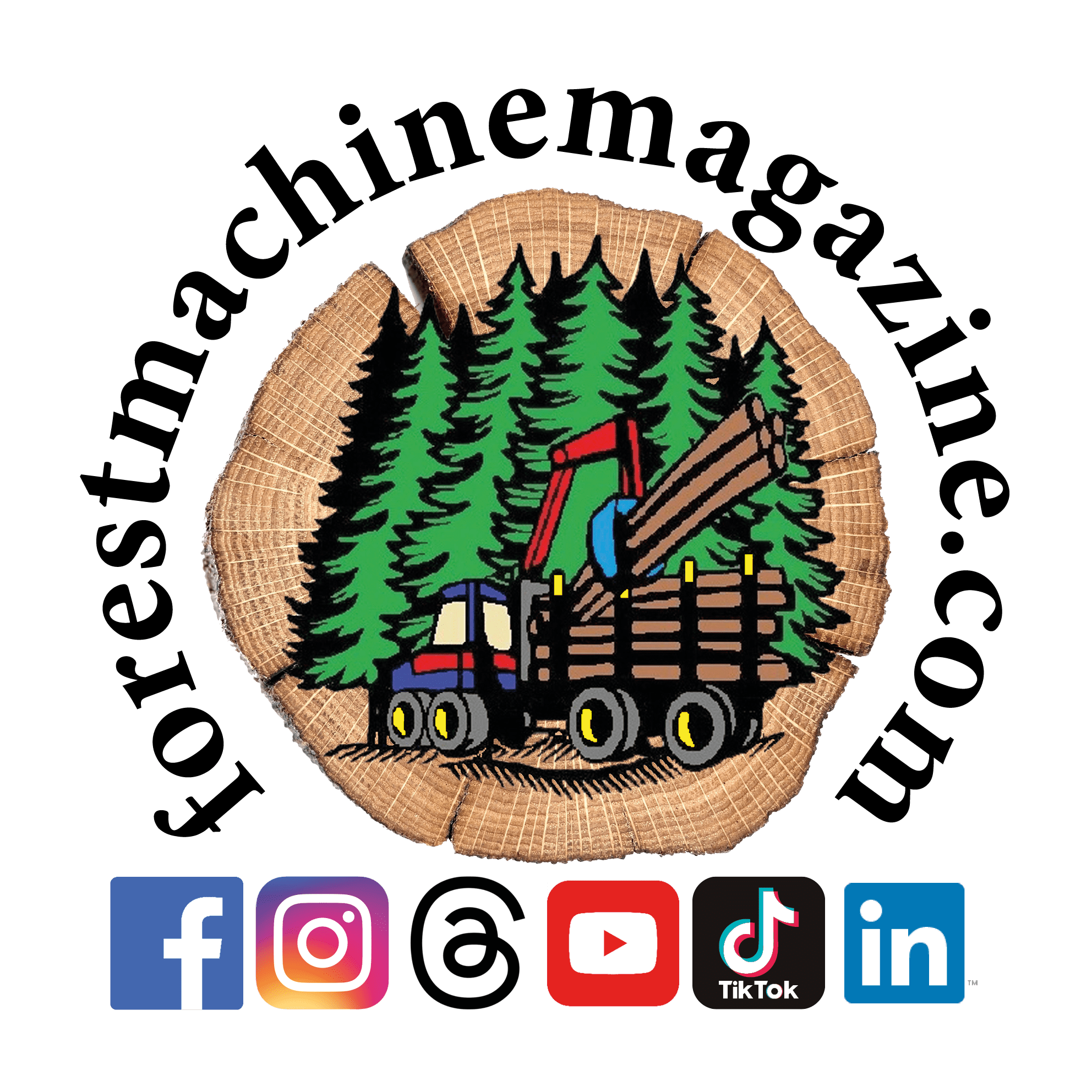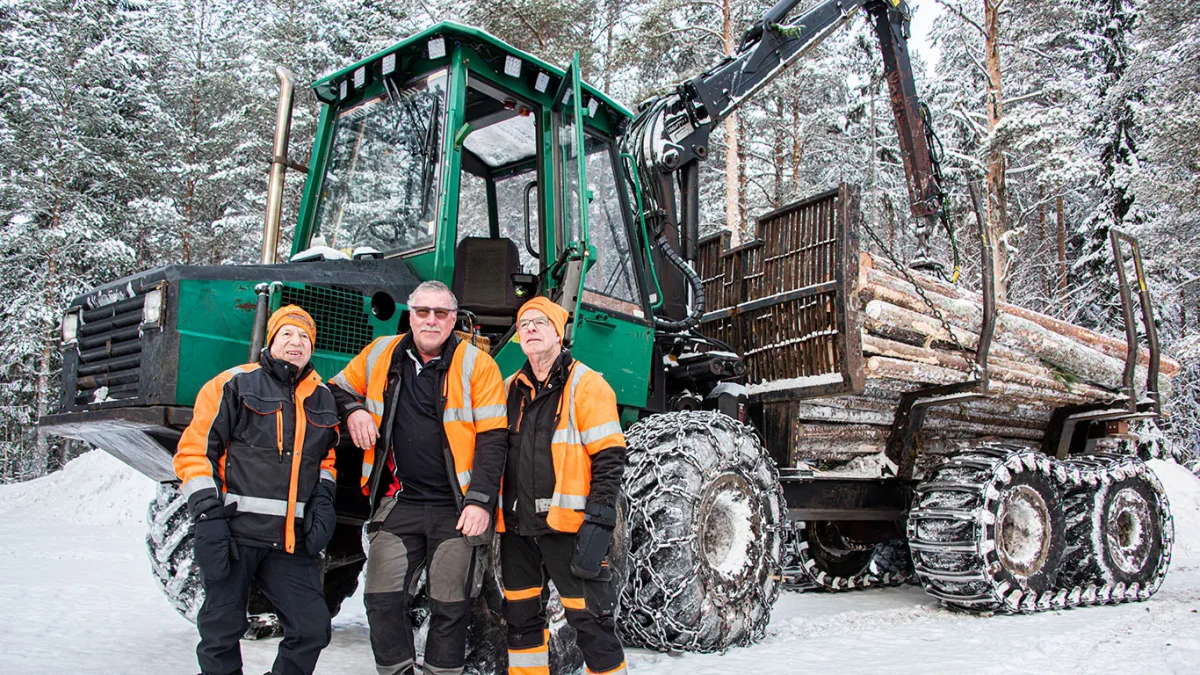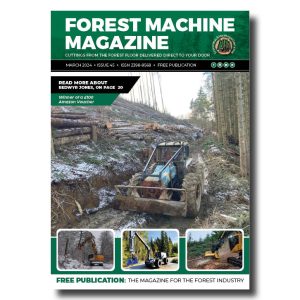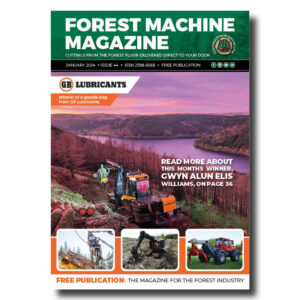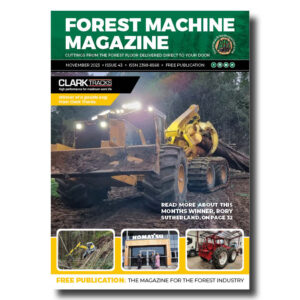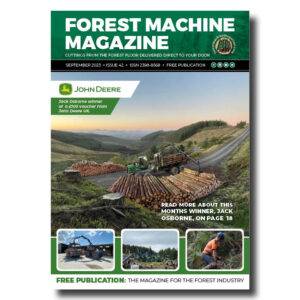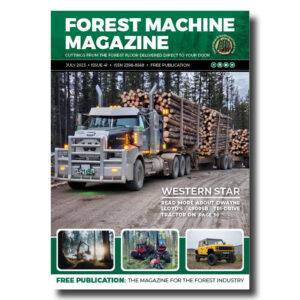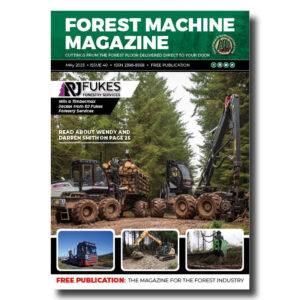“Nothing runs like a deere”. There we have a slogan that is known around the planet! But what some of our customers probably don’t know is that the history of green machines is more diverse than many think, and the roots run deep. An important piece of the puzzle to our success today can be traced to northern Sweden. More precisely, to Alfta in Hälsingland and a company that was once called ÖSA (Östbergs Smidesfabrik Alfta). We met up with some local talents to take part in their lives with ÖSA, our green machines, as well as hear some really interesting stories.
TO BEGIN WITH, ÖSA has roots that wind their way back to the beginning of the last century. The founders of the company were blacksmiths, who made a living by forging horseshoes and shoeing horses.

-
That’s a remarkable amount of work hours for a single machine, the Norcar 600 owned by Erkki Rinne is taken well care of, it even has the original Diesel engine.
-
Kieran Anders is a forestry contractor working in the lake district. His work involves hand cutting and extracting timber using a skidder and tractor-trailer forwarder.
-
It is not possible to eliminate chain shot, but there are simple steps that can be taken to reduce the risk.
-
Arwel takes great pride in the fact that the mill has no waste whatsoever, “the peelings are used for children’s playgrounds, gardens and for farm animals in barns in the winter and the sawdust has multiple uses in gardens and farms as well.
-
Timber hauliers need to encourage young blood in, and also look after the hauliers we have, we need make the sector a safe and positive place to work.
FIND US ON
Related Posts
But it didn’t take long before curiosity drove them to design and develop their own harvesters and forwarders. In 1981, Rau-ma-Repola bought the company, and in 1989, the Rauma-Repola Forest Group merged with Timberjack. There is a rich history in it that is more than enough for its own article, but here we will instead meet some individuals who grew up side by side with ÖSA, and actually still use their machines in forestry today. First out, the brothers Bertil and Lars-Erik Magnusson, 78 and 84 years old respectively. Between them, they have over a hundred years of work in the forest industry. Lars-Erik remembers how it once started for him.
“That was in 1952. I was 14 years old and started working when I finished school that spring. Then we used horses, a North Swede and an Ardennes we had. My last winter with horses in the forest was 1960. But I was a farmhand too, until I had to join the military service. After that, I drove a truck for a while. Then I worked at ÖSA from 1964 to -69. In the autumn of -69 I bought my own Volvo “Lill-Nalle” forwarder and started my own.
After two years with the Volvo, Lars-Erik got an ÖSA 462. A few years later, it became an ÖSA 260.
“It was a prototype, so I was one of the first to use that model. Then came the 280 Master, and I tested it as a prototype as well. It was probably one of the first three built,” Lars-Erik recalls.
In total, the brothers have owned and operated about ten different forwarders and harvesters over the years.

All this leads to the experience with Timberjack’s 1210 forwarders. In fact, there are two examples in the family’s possession, and both have more than 30,000 hours in operation. However, the fates and adventures of the machines differ somewhat. The 1210 we see in the pictures here was bought new by the brothers’ friend Sven-Göran “Kråka” Erlandsson. Until 2005, it was used locally, but when Hurricane Gudrun hit Småland, it became service 600 km to the south. In order to be able to stand up after Gudrun, many machines were driven down from Norrland, and this one in 1210 was one of them. When the job was finished, it was left standing in a barn down there for several years. Sadly, it was found by someone with a bit of questionable morals. It was probably thought that it was scrapped, or abandoned.
“They stole the entire interior! The instruments, the chair, almost everything that could be taken away,” Lars-Erik remembers.
A while later, it was put up for auction online, advertised as a spare parts machine. But in Alfta, there were those who had other plans and thoughts.
“Our nephew Magnus bought it, really cheap. It had then gone 28,000 hours. But since we have had to replace everything that was stolen, including the meters, we do not know exactly how much it has gone. But I’m pretty sure we’re at about 32,000 hours now,” says Lars-Erik.
“They stole the mess – the instruments, the driver’s seat,
yes, almost everything”
– Lars-Erik Magnusson –
His brother Bertil bought his 1210 around 1995, and has logged 37,000 hours to date.
“Although I’ve only driven 7000 hours, Bertil drove the rest until he had to retire. But the engine has never been replaced or even refurbished. We have never even done a compression test. It wants a splash of oil about every three hundred hours, but it’s probably just the crankshaft seal that leaks a little. So it’s nothing to get hung up on,” says Lars-Erik and shrugs.
“We’ve had to replace the hydraulic pumps, of course. And when the quality of diesel deteriorated a few years ago, then the diesel pump gave up, at 9000 hours. The diesel does not lubricate as well as it did in the past. But we have not had any real downtime or collapse. We haven’t really had to fix anything at all, not even weld cracks or anything like that.
A new 1210 cost two million kronor in 1995. So apart from the above-mentioned details, this example has just struggled on. Apart from the minor incidents mentioned above, the machine has consistently delivered over its almost 30 years, which can undoubtedly be said to be great value for money.
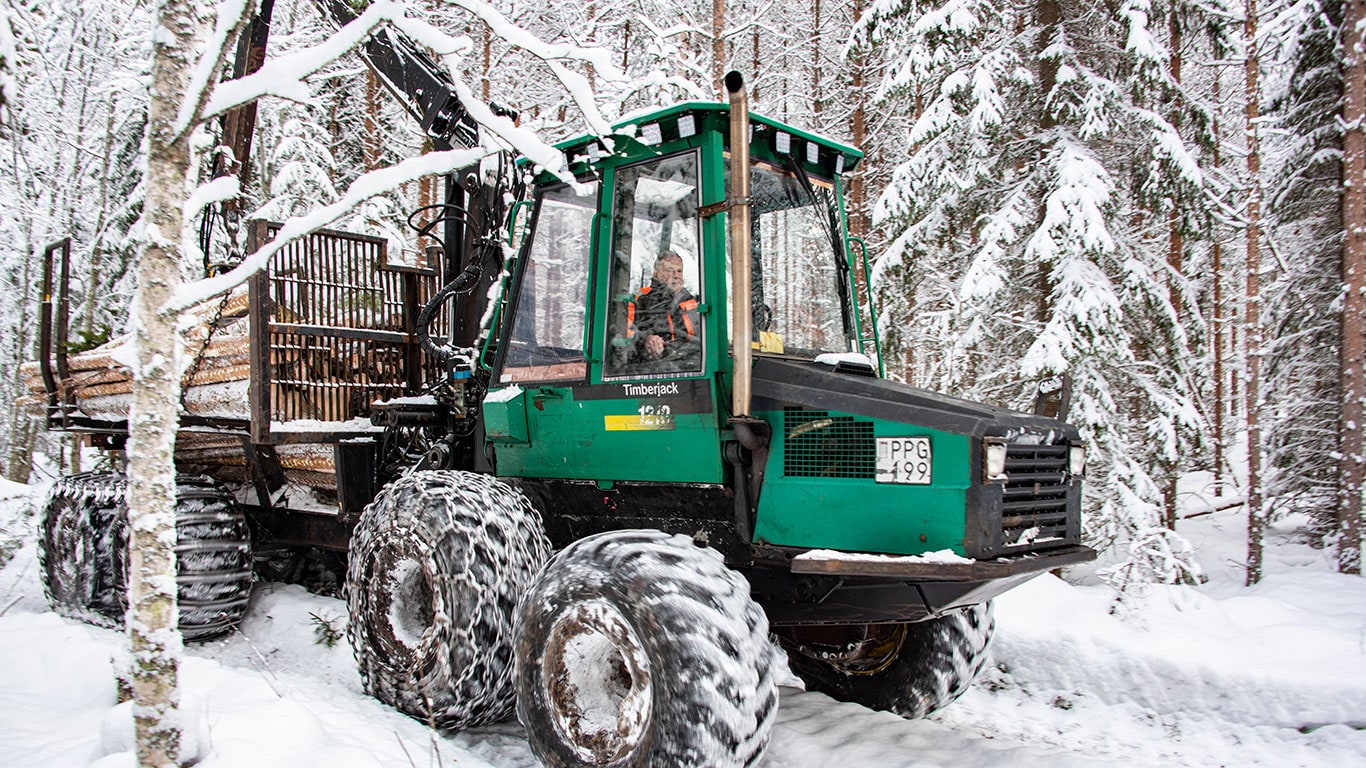
When the 1210 was developed and tested in the field in the early 90s, instructor Tommy Altberg was one of the factory’s own test drivers.
“We drove in three shifts, drove them day and night. Around, around, around the factory’s test track. We mixed the timber with steel pipes to simulate 50 percent overload to identify any defects and flaws in the design. But the 1210 never broke down during the tests. It didn’t matter how much we loaded! And the Perkins engine was so strong, you just had to drive down the three-speed Clark box and keep accelerating,” says Tommy.

This, if anything, testifies to the quality, and Tommy knows what he’s talking about.”I was hired as a test driver and instructor at ÖSA in 1974. Ever since, he has been loyal to the company. From 1994 to 2000, he lived and worked for Timberjack in North America, based in Portland, Oregon. Tommy remained with the company until 2019. Today, he works as a freelance instructor for John Deere.

“I could probably retire, but I like my job too much,” Tommy laughs and takes a splash of coffee.
Lars-Erik also has the same mentality. Why not retire and enjoy all the free time, that’s what most people dream of, right?
“No, you, working is way too much fun! I’ve probably done about 20 years of overtime now,” laughs Lars-Erik.
Just a few minutes’ drive from the Magnusson brothers’ domes we find Bengt-Olov Åberg, born in 1947. He is also heavily involved when it comes to older ÖSA machines. Both in the heart and in the workshop, it will turn out. Behind one of the gates in the yard we find a 1991 ÖSA 250 under renovation. By all accounts, a machine that has had a pretty hard life. Peeling paint, flat tires and an engine that is partially dismantled. Bengt-Olov found it at an auction in Älvsbyn, and has a plan:
“It’s a retirement project! When this 250 is renovated and rebuilt according to my plans, then you will see! So just wait,” laughs Bengt-Olov.
All the pumps have already been renovated, and a lot of hydraulic pipes and hoses have been replaced. However, there is apparently a lot of work left, although Åberg is completely convinced. This 250 is far from ready for recycling.
“No, not a chance! This 250 has a lot left to give. I’ve changed the engine to a Perkins 1006, which has around 160 horsepower if I remember correctly. It’s the same engine that was in the 1210, so it will be strong. And the 250 is so light and agile, even compared to modern machines.
Bengt-Olov knows what he is talking about, as he has another 250 in use. But more on that shortly. First, a little more about the renovation. A legitimate question is surely why on earth you are doing this?
“Because it’s fun! I’m going to replace the whole cable tangle as well. The entire electrical system must be removed. I’ve taken out the IPS boxes as well, so now it has a Parker system instead, so I can monitor everything via smartphone. So it will be a little more modern then. I’m also going to switch to a Loglift F51 crane.
To call Bengt-Olov enthusiastic would be an understatement, and in fact the same can be said of Tommy Altberg, who helps here as well.
“Having Tommy here is like winning the lottery every day! He is extremely helpful when it comes to adjusting the technique and so on. Plus, he helps me find parts, and that’s not the easiest!
Clearly, this is a project that is done with the heart, and of course a lot of hours of work are required as well. But in all honesty, will all this work really work out financially?
–No. Not even close! But that’s not why I do it either. People who fish in their spare time don’t get paid by the hour either, when they just sit there and wait for it to bite,” says Bengt-Olov and laughs loudly.
We leave the workshop and drive to an area where Åberg is thinning. Here he is working on his second ÖSA 250, a 1984 model that he bought back in 1988.
“Yep, it turned 40 now on the sixth of February. It has gone 35,000 hours and has never let me down, actually. I’ve changed the front and rear frames, but it was actually because I changed the waist lock. Then I have renovated the hydraulic pump and hydrostatic pump, but it is as expected. It’s a fantastic machine, and it still has the original engine as well.
With all that said, what is it like to work with such an old machine today? How does an ÖSA 250 compare to modern competitors?
“The big difference is in the capacity, and in the cab,” says Åberg and climbs in.
We leave Bengt-Olov to continue working. The machines we have seen here really testify to the incredible quality they have, in terms of both design and construction.
Text and photo: BILLY SÖDERIN
Contact forestmachinemagazine@mail.com to get your products and services seen on the world’s largest professional forestry online news network.
#homeoflogging #writtenbyloggersforloggers #loggingallovertheworld
Written by loggers for loggers and dedicated solely to the equipment used in forestry operations.
